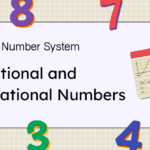Welcome to the delightful international of cheesemaking! Whether you are a pro cheesemaker or a curious newbie, understanding the position of a milk curdler is key to milk curdler in cheesemaking nyt crafting that perfect wheel of cheese. Why is the milk curdler so crucial, you ask? Well, let’s dive into the technological know-how, culture, and artistry of cheesemaking to find out.
Milk curdler in cheesemaking nyt
So, what precisely is a milk curdler? Simply placed, a milk curdler is any substance that causes milk to coagulate and form curds. This method is fundamental in cheesemaking, because it separates the milk into stable curds and liquid whey, the first step in remodeling milk into cheese. There are diverse forms of milk curdlers, every with its specific homes and uses.
The Science Behind Milk Curdling
Curious about how milk absolutely curdles? It all comes down to chemistry. Milk includes proteins, broadly speaking casein, which might be suspended in a liquid shape. When you introduce a curdler, like an acid or enzyme, it modifies the shape of these proteins, causing them to clump together and shape curds. This system can be initiated via adding acids (like lemon juice or vinegar) or enzymes (like rennet).
Natural Milk Curdlers
Let’s talk about the herbal options first. Lemon juice and vinegar are two not unusual household objects which can curdle milk efficiently. They work through increasing the acidity of the milk, which results in curdling. There are also plant-primarily based curdlers like fig sap and positive herbs which could do the trick.
Commercial Milk Curdlers
On the industrial side, rennet is the star of the display. Rennet is an enzyme historically sourced from the stomachs of ruminant animals, however there are also microbial and vegetable rennets available. Synthetic curdlers, developed for consistency and efficiency, are also widely used inside the enterprise.

Choosing the Right Milk for Curdling
Not all milk is created the same with regards to cheesemaking. The kind of milk you use can drastically have an effect on the final results of your cheese. Cow’s milk is the most common, but goat and sheep milk also are popular alternatives, each lending a unique flavor and texture to the cheese. Quality is critical—fresh, exceptional milk results in better curds.
Step-by-Step Cheese Making Process
Ready to make a few cheeses? Here’s a simplified guide:
Preparing the Milk: Start with fresh milk and warm it to the desired temperature.
Adding the Curdler: Introduce your selected curdler and stir gently.
Cutting the Curds: Once the curds have shaped, reduce them into small pieces to launch extra whey.
Cooking the Curds: Heat the curds to assist them firm up.
Draining the Whey: Separate the curds from the whey using a cheesecloth.
Shaping and Aging the Cheese: Press the curds into molds and allow them to age to expand taste.
Common Issues in Milk Curdling
Sometimes, things don’t go as planned. If your milk doesn’t curdle, it could be due to several reasons—improper temperature, low-first-class milk, or not sufficient curdler. Troubleshooting these problems involves checking your ingredients and strategies to make sure the whole thing is simply proper.
Benefits of Homemade Cheese
Why go through all this hassle? Homemade cheese boasts numerous advantages. It’s often more healthy, with fewer components and preservatives. Plus, you could personalize it to your flavor, experimenting with one-of-a-kind flavors and textures.
Traditional Cheesemaking Around the World
Cheesemaking is an ancient craft practiced internationally. In Europe, nations like France and Italy are famed for his or her cheese varieties. In Asia, areas like Mongolia have particular cheesemaking traditions that use yak or mare milk.
Innovations in Cheesemaking
Modern cheesemakers have got admission to new strategies and equipment that make the procedure more efficient and sustainable. Innovations like precision fermentation and plant-based rennets are establishing up exciting possibilities within the world of cheese.
FAQs About Milk Curdling in Cheesemaking
What occurs if you use an excessive amount of curdler?
Using an excessive amount of curdler can result in overly acidic curds, leading to a sour flavor and crumbly texture.
Can you operate expired milk for cheesemaking?
Expired milk may be used if it’s most effective slightly past its date and hasn’t spoiled. However, sparkling milk yields excellent results.
How long does it take for milk to curdle?
Curdling can take everywhere from a couple of minutes to an hour, depending on the curdler and milk kind.
What’s the difference between tender and hard cheese curdling?
Soft cheeses require much less curdling time and decrease temperatures, whilst tough cheeses need longer curdling and better temperatures for more impregnable curds.
Are there vegan alternatives for milk curdlers?
Yes, there are vegan curdlers like microbial rennet and sure plant-primarily based enzymes.
Conclusion
The function of a milk curdler in cheesemaking is sincerely essential. From the preliminary curdling manner to the very last getting old stage, the choice and use of a milk curdler can notably effect the feel, taste, and great of the cheese. Whether you choose natural curdlers like lemon juice and vinegar, or business alternatives like rennet, information the technology and techniques at the back of milk curdling is critical for successful cheesemaking.





